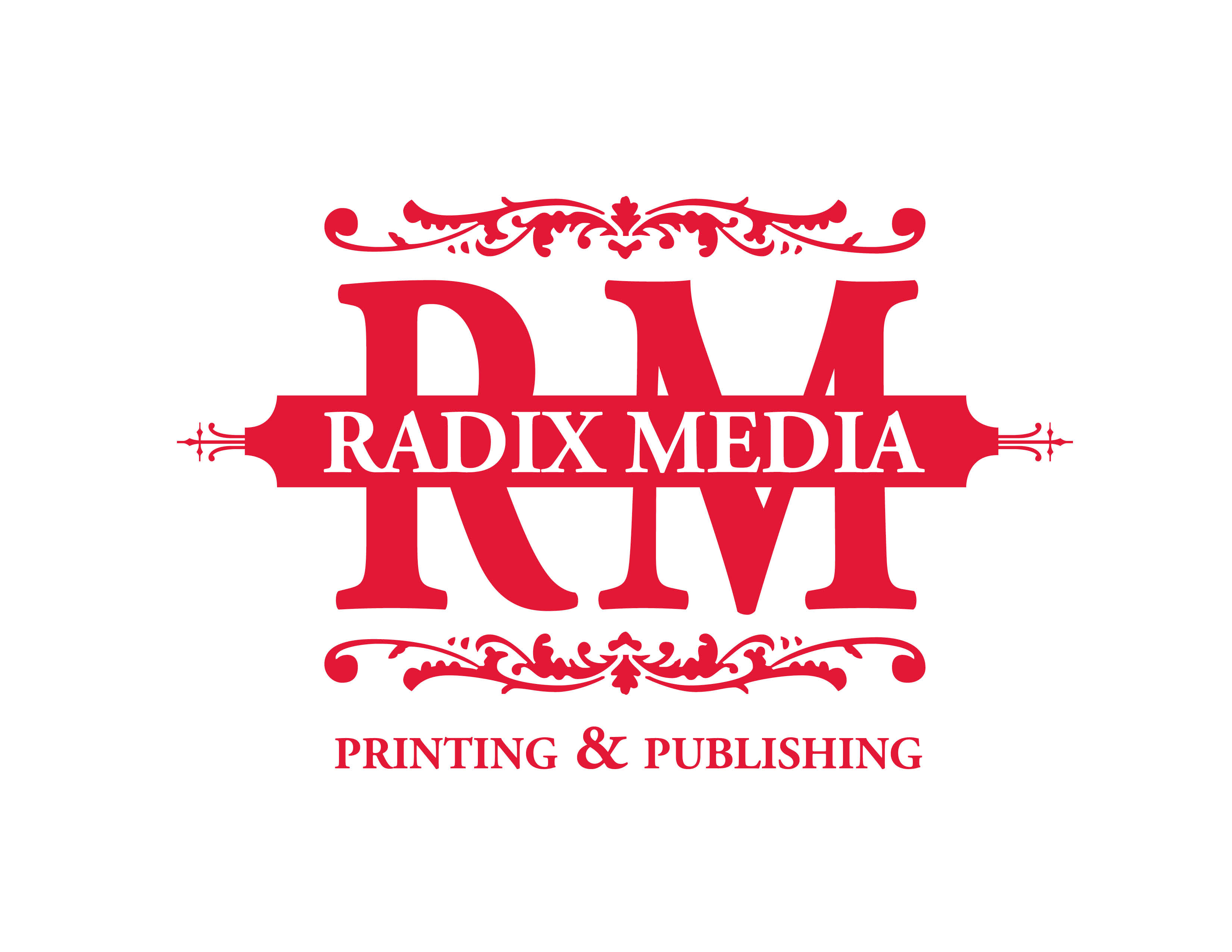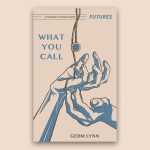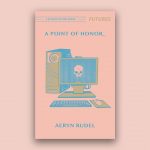Hello, my name is (Alma) Elaine Shoaf and I am the illustrator of What You Call by germ lynn, the fifth book in the Futures series published by Radix Media. In this blog post I will be detailing my creative and technical processes for the construction of these illustrations. I thoroughly enjoyed each aspect of this project, from reading germ’s amazing story (I swear I cried every time I got to the end) to prepping the images for print, and especially working with the amazing team at Radix Media. Sarah was an exceptional art director, allowing me to really explore the story and its themes, and in turn giving me permission to illustrate the book in my own voice and style.
The entire Radix team puts so much care and hard work into their books, as is evident from viewing the entire Futures series up to this point. I was particularly excited to know that they letterpress their covers and print all the interior content in-house (as they do with all their media), since printmaking and book arts hold an honored place in my heart, being passions of mine in art school and since. I believe the perseverance of the printed book—physical works of verbal and visual expression—are the ultimate testament to the human desire to leave a physical mark, which in itself is one of the most human actions of all. So with this sentiment in mind, I feel quite honored to have been a part of this project!
My initial introduction to this opportunity was through germ, who I have known for just about a decade at this point. When I found out they were looking for an illustrator for one of their stories, I jumped on it as fast as I could, having enjoyed working with them in the past on other projects, as well as being a great admirer of their writing. germ connected me with the great folks at Radix, who fortunately liked my work, and the deal was done. I was really thrilled to find What You Call to be everything I expected: thoughtful, compassionate, and emotional, while still functioning perfectly as a well-crafted, classic sci-fi narrative. As an illustrator, I strive to be energized by the challenges and learning curves one will inevitably find in each assignment, regardless (or at times, in spite) of the subject matter. I was thrilled to find that What You Call would not only present exciting challenges, but provide beautiful content that was genuinely pleasurable to illustrate. It simply felt good to sit down and get so many ideas from the source material.
Once I had all of my ideas sketched out, I sent them to Sarah and the Radix folks, and they chose their six favorite compositions (which were luckily also six of my favorites!). Below we have the thumbnail for the piece I will be breaking down, which I have alternately called “The Fox One” and “Night Vision Goggles”. I was particularly excited that this image made the cut, as while it is one of the more surreal compositions, it was my personal favorite, and I was so pleased that I got to take it and develop it further.
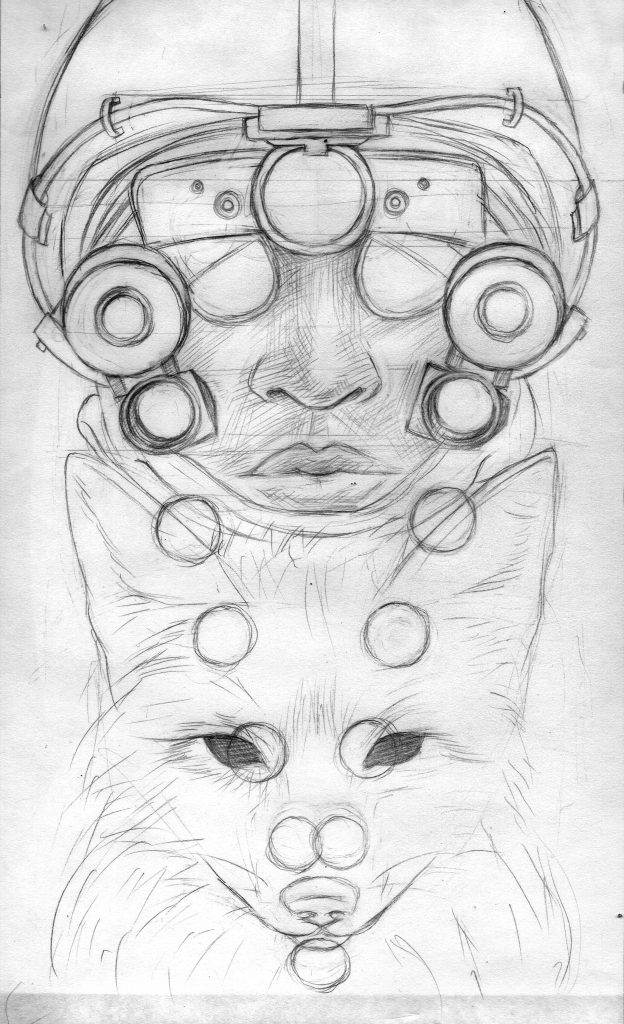 Normally I do a thumbnail for myself first, then develop that doodle into something a bit more substantial to show a client. This composition, however, came off strong enough in the first thumbnail that I went ahead and sent it on to Sarah for review. This composition is definitely the most organic to my style, with the blending of natural and mechanical forms and the overlaying of stark graphics onto more rendered and fluid forms appearing frequently in my work. Overall I wanted most of the drawings to be on the surreal side, but more insomuch as they might present odd angles and perspectives that twisted otherwise perfectly representational renderings into compositions slightly to the side of reality. Again, this composition was probably the most abstracted of them all, but the overall thematic devises—close cropping, polarized line-work and value ranges—are still in play.
Normally I do a thumbnail for myself first, then develop that doodle into something a bit more substantial to show a client. This composition, however, came off strong enough in the first thumbnail that I went ahead and sent it on to Sarah for review. This composition is definitely the most organic to my style, with the blending of natural and mechanical forms and the overlaying of stark graphics onto more rendered and fluid forms appearing frequently in my work. Overall I wanted most of the drawings to be on the surreal side, but more insomuch as they might present odd angles and perspectives that twisted otherwise perfectly representational renderings into compositions slightly to the side of reality. Again, this composition was probably the most abstracted of them all, but the overall thematic devises—close cropping, polarized line-work and value ranges—are still in play.
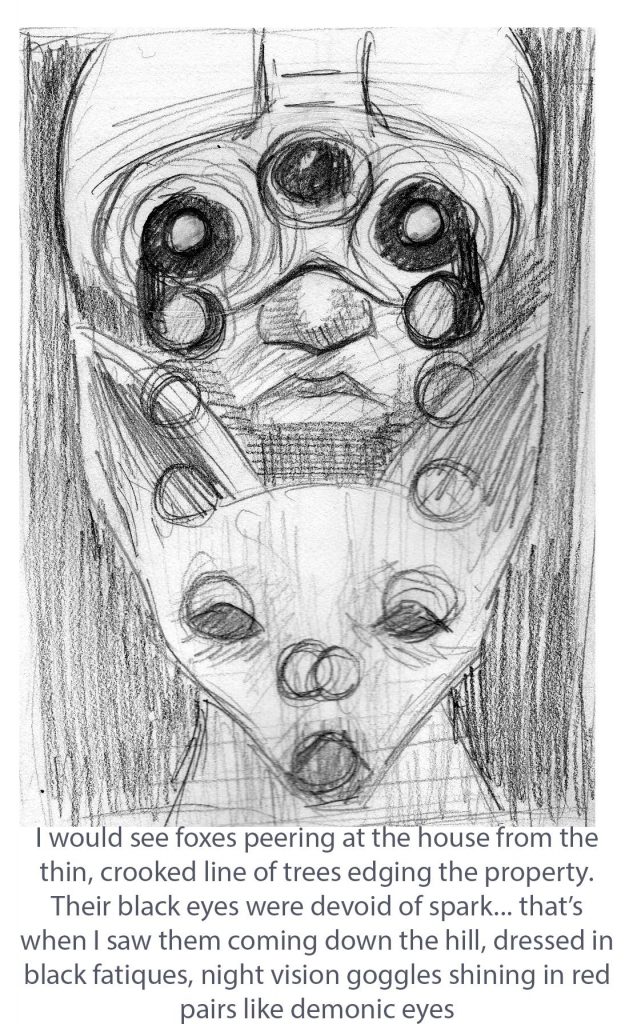 The next step is to do a tight pencil drawing of the composition on sketch paper. I usually send this to a client for approval as well.
The next step is to do a tight pencil drawing of the composition on sketch paper. I usually send this to a client for approval as well.
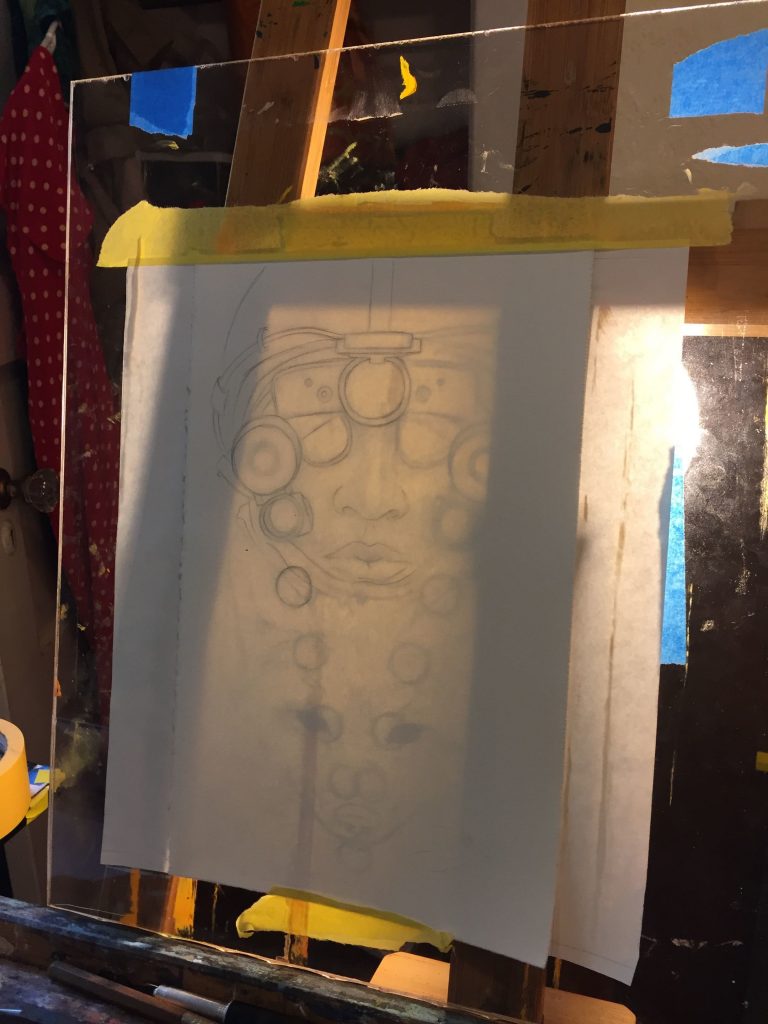
After making any changes that need to be made, I trace the drawing onto Rivers BFK printmaking paper. From here I tweak the drawing a bit to get it just right, and then I begin rendering with a black colored pencil (usually Primsacolor). I didn’t get a picture of this particular piece in this stage, but below I have a different drawing in the same under-drawing stage.
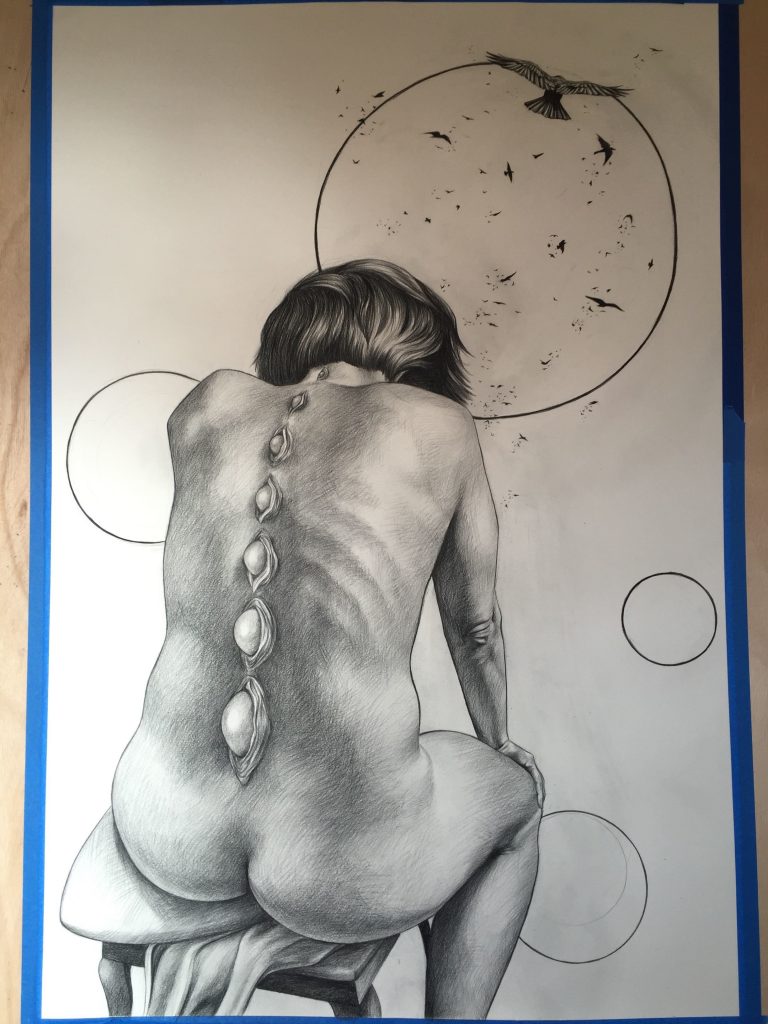
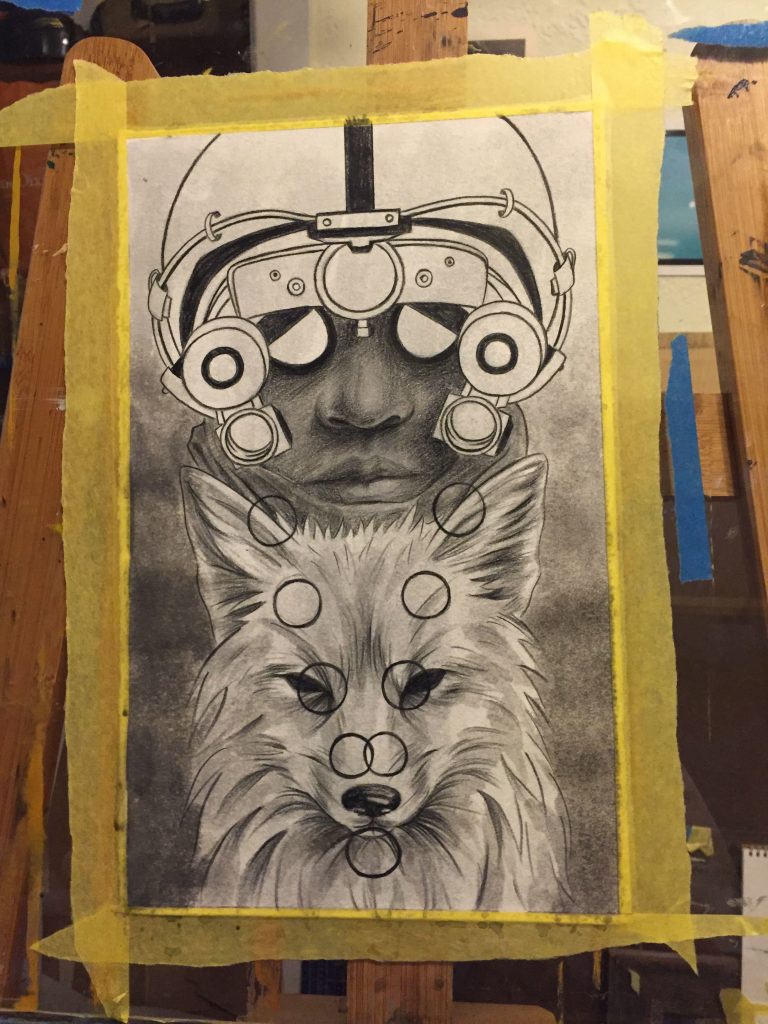
Once I’m done with the pencils, I lay in some more value using black India Ink, which tends to slip over the waxy Prismacolor nicely. If I were doing color, I would use watercolor and ink at this stage, but since these were being printed in black and white, I just used different dilutions of black ink.

After the ink layer, I do another layer with acrylic washes. Again, I don’t have a photo of this piece at this stage, but here is a different piece at the same stage in the process. I use a mixture of clear gesso and matte medium to dilute the acrylic paint. While I’m still building values, this is also the stage where I really push all the highlights back, and create a more uniform surface to the image.
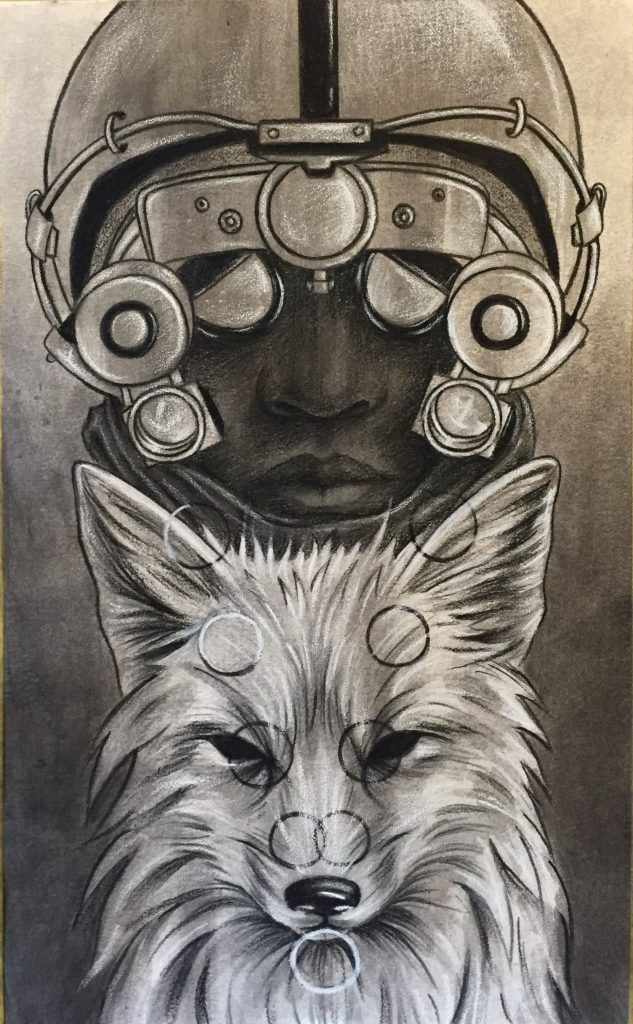
The final physical stage of the drawing is to go back in with black and white colored pencil (and a touch of chalk and white gouache on the really stark whites) and rebuild the lights and darks. With this piece I wanted to experiment with not putting any highlights back into the face, to see how that would play with the foreground/background relationship, and to also see if it helped convey the mysterious and sinister quality of the soldiers in the story. You’ll see here that I had originally made the edges on the eyepieces on the night vision goggles all black, but later I adjusted them to a lighter gray similar to the rest of the headpiece using acrylic and a little bit of Photoshop. I wanted the whole headset to have a very crisp outline against the face.
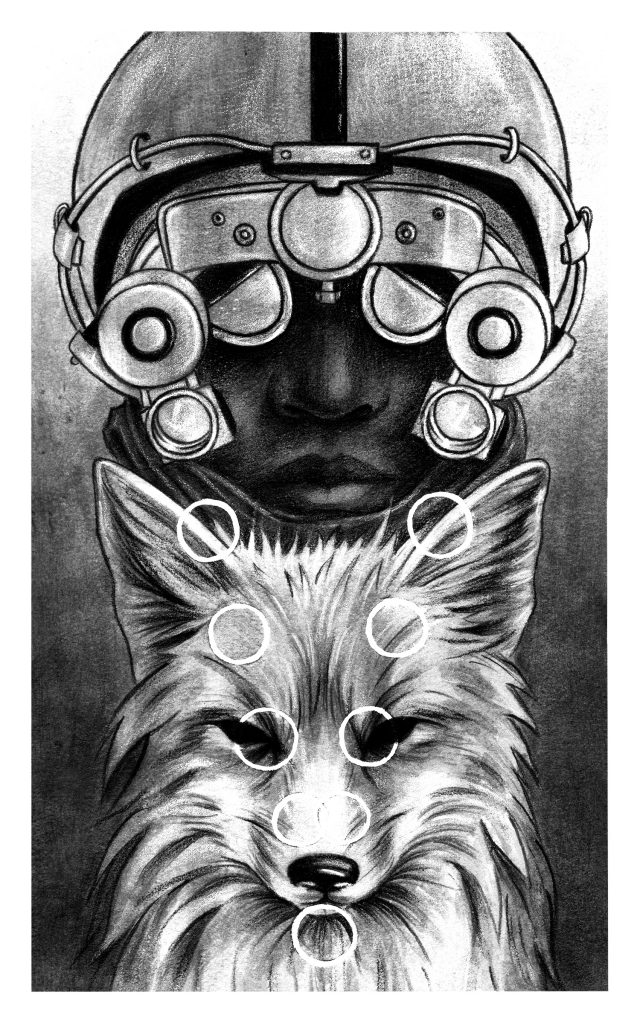
After the drawing is all done, I scan the piece and take it into Photoshop, where I clean up any stray marks and make any small changes I want (such as the outline of the eyepieces I mentioned above), and adjust the levels and values. These images required a very high contrast for the offset printing process, so the levels were changed quite a bit in Photoshop before being finalized for print.
And there you have it! Each interior was done in the same way, while the cover was done more digitally, with the line-work being the only hand drawn element. I hope that reading this gave you some interesting insight into the process behind these images. Thanks again to germ and the whole team at Radix Media for giving me the opportunity to work on this project, and for being all around amazing!
Publisher’s Note: If you enjoyed this post by Alma Shoaf, check out an excerpt of What You Call on our blog. Visit our store to purchase the story on its own, or purchase the box set and get all seven stories in the series!
